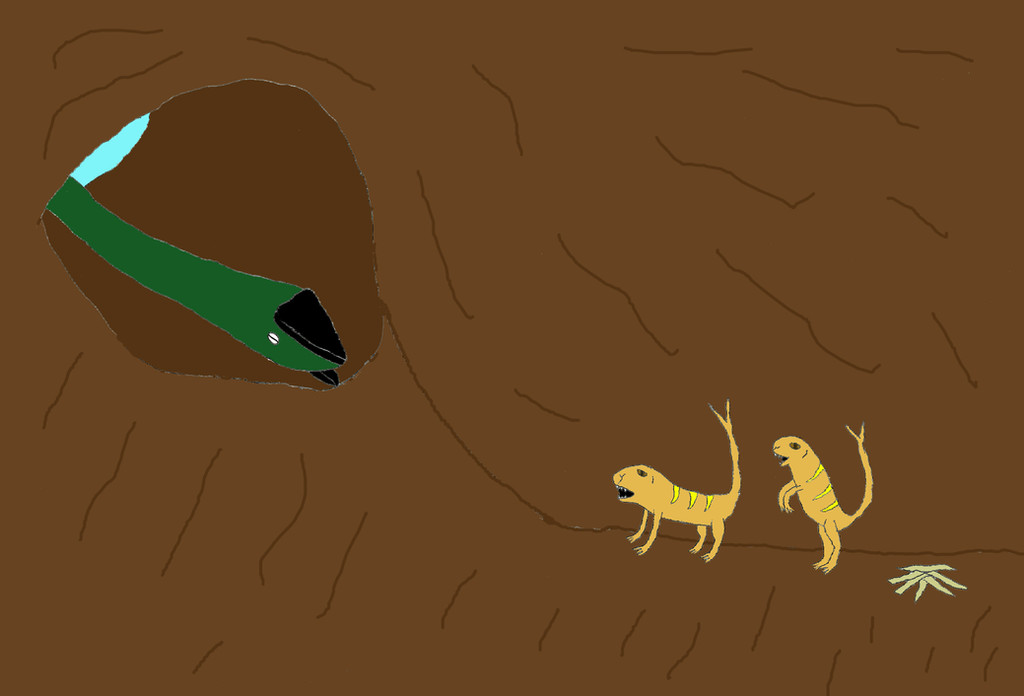HOME | DD
 Tarturus — Subterranean Terror
Tarturus — Subterranean Terror

#cerulea #tarturus #aliencreature #alienworld #burrow #predator #sciencefiction #scifi #subterranean #xenobiology #speculativeevolution #speculativebiology
Published: 2018-09-05 06:18:20 +0000 UTC; Views: 667; Favourites: 4; Downloads: 0
Redirect to original
Description
Terror ensues in the burrow of a mated pair of striped tunnel runners as a green serpentine shield head slithers into their burrow.
The shield heads are quite a distinctive group. Exactly what evolutionary circumstance resulted in an entire "phylum" all having a hard triangular chitinous shield plate on top of their heads is still not quite clear. The head shield is known to have been present even in the earliest known fossils of basal shield heads living in Cerulea's prehistoric seas. Different hypotheses for the original purpose of the head shield include a structure to help burrowing, a defensive structure, and a weapon for attacking prey with headbutting attacks. All of these uses are seen among different types of modern shield heads, but it is hard to tell which if any of these was the original use of their shield.
Shield head skeletons are formed of a series of interconnected shell plates, making them different from both the convergent vertebrate type skeletons of Cerulea's vertebrates, and the ring-and-rod skeletons of the pseudo-arthropods. They all have a bird-like beak that can come in many different forms depending on the ecological niche the shield head in question occupies. This beak though is chitinous rather than keratinous and thus really more akin to a cephalopod beak than a bird beak. Terrestrial shield heads are, like Cerulea's terrestrial vertebrates, ancestrally four-limbed. However, there have been at least several separate occasions where shield heads have lost their limbs and evolved into serpentine forms (it is also noteworthy that aquatic shield heads often have eel-like forms).
On the open plains of Cerulea, mesopredatory niches are often filled by limbless serpentine shield heads. Like Earth's snakes they are slithering ectothermic hunters, though that is about where any similarities end. The green serpentine shield head, found across large parts of eastern Occidentalis, is just one of many species. Measuring around 45-50 cm in length, its serpentine form makes it adept at slithering into the homes of burrowing quasi-mammalian creatures such as tunnel runners and plate-backs (though the latter are a challenge to prey upon due to their armour plating). It also hunts thorn heads, and small juvenile arthrolopes and craytaurs, on the surface. The head shield is used for head butting prey and the hooked beak is good for tearing flesh.
Like most shield heads, the green serpentine shield head is a simultaneous hermaphrodite. Neither male nor female, when two of these creatures mate, either one of them, or both of them for that matter, could end up laying the eggs. A total of 5 eggs is laid and there is no parental care of either eggs or young. Juveniles must fend for themselves against predators, including even adults of their own species.

























